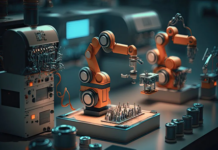
The Nobel Prize for Chemistry was awarded to three chemists in 2019, two Americans and one Japanese. The prize was given to John B. Goodenough, M. Stanley Whittingham, and Akira Yoshino for their pioneering work in the field of lithium-ion batteries, which has allowed contemporary existence. Lithium batteries fuel the contemporary world, from mobile phones and computers to children’s toys and, in this case, electric automobiles. Lithium cells are many orders of magnitude lighter than other types of batteries because they are made of the lightest metal, allowing them to store far more energy per unit of weight. This can be seen in mobile phones that compete for both lightweight and battery life.
The pioneering work of the three electro-chemical researchers described above is largely concerned with not just translating theory into practice, but also with ‘taming’ lithium, which by its very nature is unpredictable by its very nature unstable. Their research and that of hundreds of other scientists took decades, but today’s lithium-ion cells are incredibly safe. Consider this: lithium cells are everywhere around you, and while fires in cell phones and computers are not uncommon, they are extremely rare.
The first thing to realise is that electric vehicles, whether two-wheelers or cars, require far more energy to discharge (or even charge) than mobile phones or computers. The battery is clearly stressed by a large load. This causes the battery to overheat, which is the source of the problem. Thermal stability is a problem with lithium batteries, particularly lithium-NMC cells (NMC stands for Nickel-Manganese-Cobalt), which are widely used in electric cars. That is, if the cell does not cool down quickly enough, it may experience a phenomenon known as thermal runaway.
A heatstroke is the most straightforward analogue for this disease. You might collapse and, in the worst-case situation, die if your body can’t disperse heat quickly enough. Similarly, if a lithium-ion cell cannot disperse heat quickly enough, it will expand, causing damage to the cell and, in the worst-case situation, catching fire. The operating circumstances of electric cars in India during the summer — 40-50 degree ambient temperatures do not allow for adequate cooling, particularly the air conditioning systems on electric scooters in India — exacerbate the problem.
Compromise on Quality
Surprisingly, the rush of manufacturers into the electric scooter industry, many of which are merely assembling Chinese-made kits in India, has resulted in a lack of proper BMS software on many models, as well as a compromise in lithium cell standards. “Whenever a new technology is introduced, there will be issues; this was also the case with the aeroplane,” Wagle says. “There will be a steep learning curve, but the industry will learn from these experiences, and there will very likely be a shake-out of manufacturers as the sector grows.” He claims that lithium-ion batteries are still quite safe, and that those who adhere to the AIS 156 standard, an optional best practice created by the Automotive Research Association of India (ARAI), should have no issues at all. “There will be failures, just as there are now on Internal Combustion Engine cars, but we can expect a very, very low failure rate.”
Also read: A blog about the electric car industry along with an in-depth look into Tesla entering in India
According to some in the business, the government’s attempt to corral the industry by initiating a probe into the recent fire occurrences is critical. There were dozens similar conflagrations in China during the first rush of electric two-wheelers in 2017-18, before the authorities cracked the whip. Rising gasoline costs have made electric two-wheelers more economically appealing, and it is in the industry’s best interests to tackle this issue sooner rather than later.
Above all, electric scooters and electric automobiles from manufacturers who are striving to establish a name for themselves and that take pride in their software are just as safe as scooters and cars with internal combustion engines.
Blog by : Aman Verma || Valerio Electric || Growth Marketing Intern


















